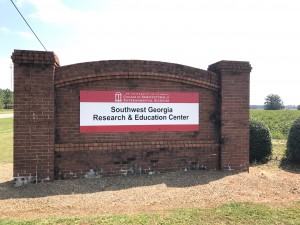 The Southwest Georgia Research and Education Center lies in the upper Coastal Plain near Plains, Georgia. The 512-acre center was established in 1951, when local citizens deeded 453 acres to Sumter County and later to the University System Board of Regents. The station’s purpose was to stimulate the depressed rural economy by helping area farmers diversify and increase crop yields.
The Southwest Georgia Research and Education Center lies in the upper Coastal Plain near Plains, Georgia. The 512-acre center was established in 1951, when local citizens deeded 453 acres to Sumter County and later to the University System Board of Regents. The station’s purpose was to stimulate the depressed rural economy by helping area farmers diversify and increase crop yields.
The site was selected because of its heavy red clay soil, which is predominant in this region of the state. It is difficult soil to farm, but can be highly productive when carefully managed. Research here is geared to the 240-day growing season and average annual rainfall of 48 inches. Nine full-time employees maintain research for UGA College of Agricultural and Environmental Sciences and U.S. Department of Agriculture researchers.
Current research focuses on every major row crop in south Georgia, including peanuts, cotton, corn, soybeans, grain sorghum, wheat, canola, peaches, watermelons and pecans. Animal scientists use the station’s 80-head cow-calf herd to conduct breeding and forage studies. The addition of irrigation in the mid-1980s made it possible to maintain crops during the area’s frequent droughts.
